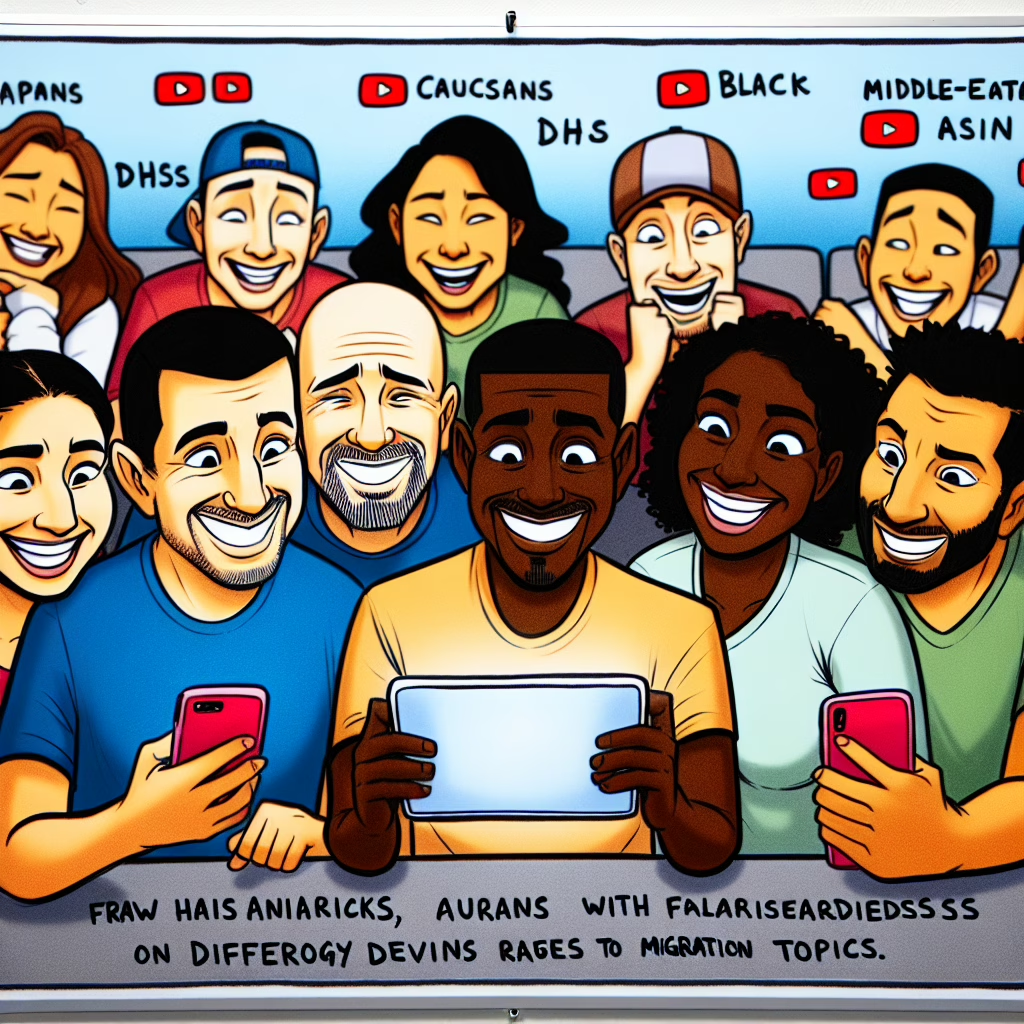In a world where social media often feels like the Wild West, the Department of Homeland Security (DHS) has decided to saddle up and ride into the digital frontier. Yes, you heard it right! In 2025, DHS is launching YouTube ads aimed at tackling the complex issue of migration from Mexico. Who knew that government agencies could get so tech-savvy? This move promises to mix a bit of humor with insight, offering a fresh approach to an age-old problem.
YouTube Ads: The New Frontier for Migration Awareness
Let’s face it: when you think of government campaigns, you probably picture somber announcements featuring stern-faced officials delivering dire warnings. But DHS has taken a different route. By harnessing the power of YouTube ads, they aim to engage younger audiences who might otherwise scroll past traditional media like it’s yesterday’s news. And hey, if they can inject a little humor into the mix, why not?
These ads will target potential migrants with informative content about legal pathways to the U.S., rather than just the usual “stay away” messages that sound more like a parent scolding a teenager than a governmental strategy. The campaign is designed to resonate with viewers who are looking for answers and guidance on their migration journey.
Why YouTube? Because TikTok Is Too Trendy!
One might wonder why DHS chose YouTube over other platforms like TikTok or Snapchat. Well, let’s be honest: trying to fit complex migration policies into a 15-second TikTok dance might be pushing it a bit. With YouTube’s longer format, DHS can dive into the nitty-gritty details without having to resort to flashy filters or viral challenges.
Plus, let’s not forget that YouTube remains one of the most popular platforms worldwide. It’s like the Swiss Army knife of video content—there’s something for everyone! Whether you’re looking for how-to guides, movie trailers, or even just cute cat videos, YouTube has it all. So why not use it as a platform for serious discussions about migration?
The Importance of Information in Migration Decisions
Many individuals considering migration may find themselves inundated with misinformation and sensationalized stories. This can lead to misguided decisions based on fear rather than facts. By utilizing engaging and informative YouTube ads, DHS hopes to set the record straight and provide accurate information on legal migration processes.
Imagine this: instead of scrolling through misleading headlines or conspiracy theories about border crossings, potential migrants encounter relatable stories from people who have successfully navigated the process. Perhaps an ad featuring a friendly face explaining visa applications would do wonders! The goal is clear—to empower individuals with knowledge that leads to informed choices rather than risky decisions.
The Future of Digital Outreach
This initiative signifies a shift in how governmental bodies approach outreach in our hyper-connected age. Gone are the days when brochures filled with fine print were deemed sufficient. Today’s audiences demand clarity and relatability—and they’re more likely to engage with content that makes them chuckle or nod in agreement.
- Engagement: The ads will be tailored to create a dialogue, inviting viewers to learn rather than feel overwhelmed.
- Analytics: With YouTube’s robust tracking tools, DHS can monitor how well their ads perform in real-time. If one ad goes viral—perhaps due to its unexpected humor—DHS can quickly adapt its strategy and maximize its impact.
- Community Feedback: By asking viewers to share their stories or experiences, DHS can create a sense of community around migration discussions.
A Lighthearted Conclusion
While the topic of migration is undeniably serious, there’s always room for a little levity—even within governmental initiatives! As we move forward in 2025, let’s hope that these creative YouTube ads from DHS inspire other agencies to think outside the box (or at least outside their office cubicles).
What do you think about this innovative approach? Will it really change perspectives on migration? Or will it just become another internet meme? We’d love to hear your thoughts! Feel free to share your opinions in the comments below.
And before we wrap up this digital adventure, let’s give credit where credit is due! A huge thanks to Wired for their original insights on this topic.
For further reading on related tech trends, check out our articles on the iPhone 16 Pro vs. the base model and GameCube controllers with the Nintendo Switch 2.

